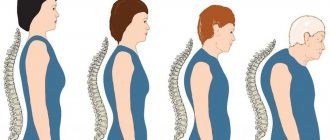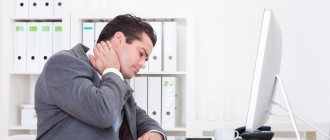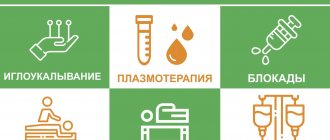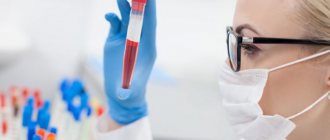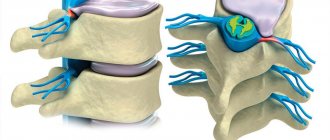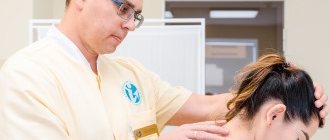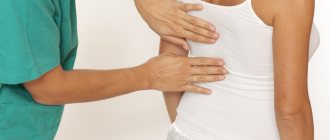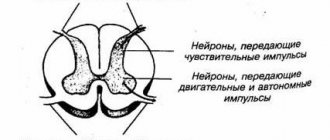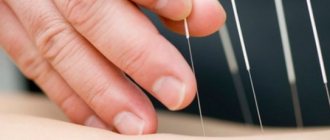Cervical disc herniation is a very common condition that affects a large number of people. It occurs with a characteristic aching pain and some numbness in the back of the neck and shoulders. The pain syndrome can radiate to the upper extremities, limiting the movements of not only the neck, but also the arms.
The intervertebral disc consists of a fibrous ring of a solid structure. Inside it is a pulpous semi-liquid nucleus. When a disease such as a hernia begins to develop, the ring becomes injured and ruptures. Its nucleus comes out and goes to the spinal cord. In this case, compression of the nerve endings and spinal cord occurs, thereby causing severe pain.
Symptoms
You can recognize the onset of a hernia in the cervical spine by certain symptoms. These include:
- aching pain in the shoulders and neck that bothers you periodically;
- discomfort increases when the neck is tilted forward, as well as when it turns;
- a person is bothered by frequent headaches;
- dizziness may occur;
- noise appears in the ears;
- arms become numb, movement in the shoulders and neck is limited.
With this disease, blood pressure begins to rise. And if the hernia progresses, then the pain becomes permanent.
What factors provoke the appearance of a hernia?
Often, a cervical hernia is triggered by trauma (especially during an accident, when a person’s body jerks sharply forward and then returns to its original position). In addition to this factor, the aging processes of the body significantly influence, as a result of which the spine loses its shock-absorbing abilities. An undeveloped and weak muscle corset puts a huge load on the cervical spine, which also leads to deformation of the intervertebral discs. Lifestyle, daily habits of a person, unfavorable environmental factors and diseases of the spine can influence the development of diseases of the cervical spine. We must also not forget about a kind of professional deformation that occurs when the neck is in a position for a long time that disrupts the natural metabolic processes of vertebral tissue. In this case we are not talking about hard physical labor. This could be a dentist who sits for hours bending over a patient; a painter forced to look up for a long time while painting the ceiling; programmer working at a computer, leaning towards the screen. The list can be continued for a very long time. Regardless of the reasons, the disease can develop rapidly (from several hours) or over a long period.
Causes
You can encounter a cervical hernia of the spine for certain reasons. Most often, this disease occurs as a result of existing spondylosis or osteochondrosis. Other provoking factors include:
- injuries received during childbirth;
- advanced degree of spondylolisthesis;
- congenital anomalies of vertebral development.
A herniated cervical vertebrae can be caused by injuries sustained during sports, as well as in a car accident.
1.General information
The human spinal column, as a whole, turned out to be evolutionarily unprepared for upright walking—more precisely, not quite ready, since certain compensating mechanisms are nevertheless provided by nature. But indeed, the vertical loads on a flexible spine assembled from segments significantly exceed the longitudinal stresses in the spine of the heaviest or most active quadrupeds, whose musculoskeletal mechanics are much better adapted to their lifestyle, and the resultant forces are optimally distributed and balanced.
The above-mentioned compensator for peak loads on the spinal column (during falls, jumps, impacts, heavy lifting, etc.) in humans are intervertebral discs. This is a rather complex structure of a central gel-like body (actually the shock-absorbing nucleus pulposus) in a shell of fibrous and cartilaginous tissue (annulus fibrosus). Under unfavorable conditions and under the influence of certain factors, the disc can shift from its natural position, bulging into the spinal canal with rupture of the fibrous ring, pinching of the radicular nerve endings and ischemia (significant reduction in blood supply to tissues). This condition is called a herniated disc.
In neurovertebrology, hernias (and their complications) are one of the most common types of specialized pathology. Intervertebral hernia can theoretically occur in any part of the spinal column (and does occur in reality), but the frequency of occurrence in different parts is not the same. The rarest option is a hernia of the thoracic region, while displacement of discs in the cervical and especially lumbar regions is, alas, a common phenomenon for modern people. However, “ordinary” does not mean harmless, painless, insignificant. But it would also be wrong to consider herniated cervical intervertebral discs a fatal inevitability.
A must read! Help with treatment and hospitalization!
Consequences
If the disease has already reached an advanced stage, complications begin to develop. Nerve fibers passing through the cervical spine provide vital activity to the rest of the body with such important organs as the kidneys, lungs, heart and liver. Subsequently, the functioning of internal organs located below the neck is disrupted.
Also, such a disease can provoke a violation of cerebral blood flow. As a result, some areas of the brain experience oxygen starvation, as they do not receive the required amount of blood. A person begins to experience frequent dizziness and severe headaches. Memory deteriorates, and gait is significantly impaired. That's why it's so important to see a doctor on time.
Anatomical features
The spine consists of 24 vertebrae connected by intervertebral discs that perform a shock-absorbing function. The discs are surrounded by a hard shell called the annulus fibrosus. Inside they are filled with gel-like contents - the nucleus pulposus.
Vertebrae consist of bodies and arches. The arches form the spinal canal, a vertical cavity that houses the spinal cord. Spinal nerves depart from it, which transmit impulses to all organs, regulating their activity.
Diagnostics
Back pain does not necessarily mean that it is a vertebral compression fracture. To correctly determine the cause of the ailment, a comprehensive examination is needed. The doctor at the Noosphere clinic will carefully examine, interview the patient and determine how dangerous the fracture is, if any. The doctor will make an accurate diagnosis using the following diagnostic methods:
- MRI. Magnetic resonance imaging
- Ultrasound examination (ultrasound)
- Laboratory research
Symptoms of a herniated disc
Symptoms can vary significantly due to the location of the hernia and its size, as well as the individual characteristics of the patient.
The first sign that indicates a problem in the neck area is pain, which is found not only in the affected area. Quite often the pain radiates to the arm.
Gradually, the disease will begin to progress, resulting in new symptoms.
A C5 C6 disc herniation is usually accompanied by:
- stiffness of the neck and limitation of its mobility;
- numbness and tingling in various parts of the upper limb;
- weakening of the arm muscles (biceps of the front side of the shoulder and triceps of the wrist), making it difficult to perform the necessary manipulations;
- pain and numbness in the shoulder;
- pain in the interscapular area and under the scapula;
- headache (usually starting from the back of the head);
- dizziness;
- high blood pressure or pressure surges.
In very rare cases, when an intervertebral hernia compresses the spinal cord, the following appear:
- severe weakness in the arms, making it difficult to perform small movements (for example, fastening buttons, grasping objects);
- hand tremors;
- difficulties that arise during normal walking, unstable gait;
- inability to control urination or bowel movements.
In these cases, emergency medical attention is required.
Treatment
In our Noosphere clinic, a hernia of the cervical spine is treated without surgery. Thanks to carefully selected conservative methods, our specialists are able to stop the development of this disease. A special individual course is selected for each patient. In this case, the following must be taken into account:
- patient's gender;
- his age;
- stage and advanced stage of the disease;
- the cause of cervical hernia;
- physiological characteristics of the body.
Treatment may take up to six weeks. But the course will depend on the stage of the cervical hernia. It usually consists of the following procedures:
- Resonance wave UHF therapy
Resonance wave therapy is a method of therapeutic effects on the aquatic environment of the body with low-intensity, high-frequency electromagnetic waves.
- Fermatron injections
Fermatron intra-articular injections are an effective method of treating various diseases of the musculoskeletal system by introducing a drug (chondroprotector) into the affected joint.
- Rehabilitation on the Thera-Band exercise machine
Treatment of the spine and joints using the Thera-Band simulator will restore limb mobility in a short period of time without expensive treatment in specialized sanatoriums.
- Block of joints and spine
Joint blockade is a type of drug treatment of the spine and joints aimed at relieving acute pain, inflammation and muscle spasms.
- Drug treatment
Drug treatment of joints and spine at the Noosphere clinic is used in a wide range and in combination with physiotherapy. Intra-articular injections, blockades and droppers.
Treatment at the Noosphere clinic will help you get rid of unpleasant neck pain, improve poor circulation, restore nutrition to the affected discs and prevent the appearance of new hernias. At the same time, the patient’s general well-being significantly improves and the pressure in the blood vessels of the brain stabilizes.
After treatment, each patient receives medical recommendations, giving him the opportunity to forget about the hernia forever and no longer have to deal with its unpleasant symptoms. This memo is also compiled on an individual basis.
4.Treatment
In the treatment of intervertebral hernias, conservative (medicinal) and physiotherapeutic methods are used, and if the prognosis is clearly unfavorable (for example, with a tendency to develop cerebral circulation disorders) and all other possibilities for pain relief have been exhausted, they resort to neurosurgical methods.
Thus, tissue trophism (nutrition) stimulants, analgesics, anti-inflammatory drugs, muscle relaxants, and chondroprotectors can be prescribed. In some cases, fixing collars are prescribed, in others it is necessary to strictly observe bed rest, without which the disc will not be able to return to its original position. Various applications, medicinal electrophoresis, magnetic and reflexotherapy, and exercise therapy are widely used. Massage and, especially, manual therapy should be prescribed very carefully and performed exclusively by a doctor with the appropriate specialization and qualifications.
In general, it should be noted that intense discussions regarding the optimal therapeutic strategy do not yet allow us to consider any approach the most effective. Many complaints and justified warnings are expressed, in particular, about contact and gymnastic techniques - in this area today there are many charlatans and obscurantist enthusiasts who, unfortunately, can cause irreparable harm. Self-medication in any of its variants is equally dangerous.
There are also doubts about whether surgical intervention in the spinal cord area should be considered the method of choice. However, the successes of neurosurgery are so obvious that sometimes surgery is the most effective and safe way to treat a hernia. Several basic techniques for its removal have been developed and are successfully used, but, again, this kind of intervention should only be performed by well-equipped clinics staffed with highly qualified personnel. Otherwise, the risk of severe complications may be unreasonably high.
In conclusion, it should be said that the best prevention of intervertebral hernias is knowledge and understanding of etiopathogenetic mechanisms and favorable conditions: if not all, then the vast majority of risk factors can and should be excluded.
Classification
To understand the classification of a herniated disc, you need to know that the spinal cord is located behind the disc, the nerves are on the sides, and the abdomen is in front. The disk has a round shape and, if you mentally divide it in half, you get a front and back semicircle. Tears in the anterior semicircle are extremely rare, do not cause pain and, in fact, are not dangerous, so they are of no practical interest. But ruptures in the posterior semicircle are precisely those herniated discs that are of clinical interest.
In the classification of disc herniation, there are three localizations. A median or median disc herniation is located strictly back, along the midline. And since the spinal cord is located behind the disc, such large hernias can threaten it. But, this only applies to the cervical and thoracic spine. In the lumbar region, due to anatomical features, there is no such danger. But there is another problem - lateral disc herniation - localized in the lateral sector. On the side, as we remember, there are nerves, so such a hernia can, theoretically, compress them and cause radicular syndrome. Why theoretically? Because, most often, in almost 90% of cases, hernias do not compress anything. And finally, if the rupture occupies an intermediate - posterolateral position, this is called a paramedian disc herniation. Also, there is a classification of disc herniation according to severity. For example, protrusion is a “pre-hernia” condition. And sequestration is the final stage of a hernia, which is usually followed by “healing,” the so-called spontaneous resorption of the hernia. And while we're on the subject, it should be said that the goal of proper treatment is not only to relieve pain, but also to optimize the healing process. But we will talk about this a little below.
Causes of the disease
The causes of disc herniation can be divided into main and additional. The main reasons are three pathological processes, three “Ds”: dystrophy, dysplasia and muscle imbalance. Without them, a hernia cannot appear, in principle. Under the influence of these processes, the disk becomes weak and unstable even to small loads.
Dystrophy is a violation of tissue nutrition at the cellular level. Dystrophic changes in the disc always precede a herniation. Dysplasia is a structural disorder. A kind of “manufacturing defect”. A “defective” disk is a time bomb that can explode at the most inopportune moment. Muscle imbalance is a key cause of disc herniation. Normally, the load on the disk should be distributed evenly. This is ensured by the balanced work of muscles on opposite sides of the spine. The imbalance shifts the load to one side, causing critical overload of the disk. And, if the disc is already depleted by dystrophy and dysplasia, then its rupture and hernia become inevitable.
Additional causes of disc herniation determine the location of overload and future rupture. Since hernias most often form either in the zone of maximum curvature of the spine or in the zone of hypermobility, such causes are uncompensated curvatures and scoliosis, as well as static and dynamic overloads - heavy lifting, awkward movement, sedentary work, etc.
How to prevent hernia formation
Methods for preventing hernia can be called classic, since they can prevent a whole “bouquet” of diseases. In the first place is physical activity, alternating stages of active work (including in a sitting position) and active rest. To prevent the development of cervical osteochondrosis, it is necessary to observe occupational hygiene: take a 10-minute break every 50-60 minutes of continuous work in a sitting position. This time should be used to stretch, do squats, and stretch the muscles of the neck and upper shoulder girdle.
Further preventive measures include proper nutrition, which means consuming a certain amount of water during the day, vegetables and fruits, avoiding refined and sweetened, fatty and salty foods. If the pain continues to bother you, you need to take care of purchasing an orthopedic mattress and pillow, as well as special shoes. It is worth paying attention to massage of the cervical-collar area, which you can perform independently. When performing normal work, it is necessary to keep your back straight and when lifting acceptable weights, avoid straining the neck muscles.
Treatment of a hernia of the cervical spine in the “Health Workshop”
In most cases, a cervical hernia can be treated without surgery.
Our clinic specialists know how to treat the disease using non-surgical methods. Conservative treatment of a herniated cervical spine stops the progression of the disease. For drug treatment of cervical hernia of the spine, the patient may be prescribed a course of:
- medications that relax muscles, bringing them to their usual tone;
- medications that relieve inflammation (if the hernia is in the acute stage, then injections are preferable);
- vitamin complexes that improve metabolism and help better nourish the body;
- chondroprotectors that help restore fibrous rings between the vertebrae.
For a herniated cervical spine, treatment can be carried out using other types of drugs, depending on the situation. But self-medication is unacceptable; it can lead to a worsening of the situation or the emergence of new problems.
Our doctor prescribes an individual course of treatment for the patient, taking into account the stage of the disease, age, gender and characteristics of the body. Treatment will take from 3 to 6 weeks. The patient undergoes procedures 2-3 times a week. The course of treatment optimally combines five or more types of procedures from the list.
A course of treatment at the Health Workshop in St. Petersburg relieves pain in the neck and spine, normalizes the nutrition of the discs, improves blood circulation and prevents the appearance of new hernias. The patient's blood pressure in the brain normalizes and his health improves. Our doctors will give recommendations on what to do regularly to prevent neck pain from returning.
